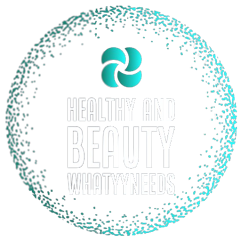Beauty has long been a captivating and alluring aspect of human existence, inspiring art, literature, and cultural practices throughout history. The allure of beauty is undeniable, but as with any powerful force, it comes with its share of complexities and potential dangers. While beauty itself is not inherently dangerous, the perceptions, expectations, and standards surrounding it can lead to a range of negative consequences for individuals and society as a whole. In this essay, we will explore the multifaceted nature of beauty and the various ways in which its pursuit can be perceived as dangerous. From unrealistic standards and body image issues to the impact of social media and the beauty industry, we will delve into the darker aspects of beauty that can potentially harm physical, mental, and emotional well-being. It is crucial to recognize these dangers to foster a more inclusive and balanced understanding of beauty, where self-acceptance, authenticity, and individuality are celebrated above all else.
- Unrealistic
standards: Unrealistically high beauty standards portrayed in media can
lead to self-esteem issues and body dysmorphia.
- Body
image issues: The pursuit of an idealized beauty can trigger eating disorders
and other harmful behaviors to achieve an unrealistic appearance.
- Cosmetic
procedures: Excessive reliance on cosmetic procedures can lead to health
risks and complications.
- Addiction
to beauty products: Overuse of beauty products can have adverse effects on
the skin and body.
- Objectification:
Beauty can sometimes lead to objectification, where people are judged
solely based on their appearance.
- Exploitation:
Some industries capitalize on beauty by promoting unhealthy products or
perpetuating unrealistic beauty standards.
- Jealousy
and competition: Beauty can create jealousy and unhealthy competition
among individuals, leading to social tension and negative emotions.
- Pressure
to conform: Society's emphasis on beauty can force individuals to conform
to certain norms, suppressing individuality and diversity.
- Discrimination:
Attractive people may face discrimination due to perceived advantages or
biases against their appearance.
- Emotional
manipulation: Beauty can be used as a tool for emotional manipulation in
personal relationships or professional settings.
- Social
media impact: The pressure to maintain a perfect online image can lead to
mental health issues and a distorted sense of self-worth.
- Objectification
in media: The objectification of individuals, particularly women, in media
can lead to harmful stereotypes and perpetuate sexism.
- Narcissism:
A focus on one's own beauty can contribute to narcissistic tendencies and
self-centered behavior.
- Financial
burden: The beauty industry can lead to unnecessary spending on products
and services, creating financial strain for some individuals.
- Health
risks: Certain beauty practices, such as excessive tanning or extreme
dieting, can jeopardize overall health.
- Identity
crisis: Beauty standards may cause individuals to question their
self-identity and struggle to find genuine self-acceptance.
- Mental
health impact: Unrealistic beauty ideals can lead to anxiety, depression,
and other mental health disorders.
- Bullying
and teasing: People who are perceived as beautiful may become targets of
jealousy or bullying.
- Perpetuating
superficiality: An obsession with beauty can lead to shallow and
superficial interactions, neglecting deeper connections.
- Time-consuming:
The pursuit of beauty can be time-consuming and divert attention from more
meaningful pursuits.
- Environmental
impact: The beauty industry's excessive packaging and waste contribute to
environmental issues.
- Dangerous
trends: Certain beauty trends, such as extreme diets or dangerous beauty
challenges, can pose health risks.
- Overemphasis
on appearance: Beauty-centric cultures may prioritize appearance over more
essential qualities like kindness and intelligence.
- Misuse
of beauty products: Some beauty products can be toxic if used improperly,
causing harm to users.
- Substance
abuse: In some cases, beauty standards may encourage substance abuse to
achieve a desired appearance.
- Ethical
concerns: The use of animal testing in the beauty industry raises ethical
dilemmas.
- Exploitation
of minors: Beauty standards can lead to the sexualization of minors in
media and advertising.
- Insecurity
and self-doubt: Constant exposure to beauty ideals can lead to feelings of
insecurity and self-doubt.
- Cultural
implications: Beauty standards may perpetuate cultural appropriation and
erode the uniqueness of various cultural identities.
- Dysfunctional
relationships: The pursuit of beauty can lead to dysfunctional
relationships where appearance is prioritized over emotional connection.
It's essential to remember that beauty is subjective, and true beauty lies in embracing individuality, self-confidence, and inner qualities that make us unique. Society should strive to foster a more inclusive and accepting perception of beauty that celebrates diversity and promotes positive self-image.
In conclusion, beauty's allure can be both captivating and
dangerous, depending on the context in which it is perceived and pursued. While
appreciating beauty is a natural and fundamental part of being human, the
dangers arise when society imposes unrealistic standards, objectifies
individuals, and promotes harmful practices in its pursuit. We have explored
how beauty ideals can lead to body image issues, mental health problems, and
the perpetuation of harmful stereotypes. Furthermore, the influence of social
media and the beauty industry can exacerbate these dangers, placing immense
pressure on individuals to conform to unattainable standards.
To mitigate the dangers associated with beauty, we must
foster a cultural shift that celebrates diversity, authenticity, and
self-acceptance. This requires challenging harmful beauty norms, encouraging a
more inclusive representation of beauty in media, and promoting healthy body image
and self-esteem in individuals of all ages. Education and awareness campaigns
can play a significant role in helping people develop a more nuanced and
balanced perspective on beauty, recognizing that true beauty lies not just in
appearance but in the qualities that make us unique and compassionate human
beings.
Ultimately, beauty can be a powerful force for positive
change when celebrated in its most authentic and inclusive form. By embracing
our individuality and encouraging others to do the same, we can create a world
where beauty is no longer perceived as dangerous but rather as a source of
empowerment, confidence, and appreciation for the rich tapestry of human
existence.


